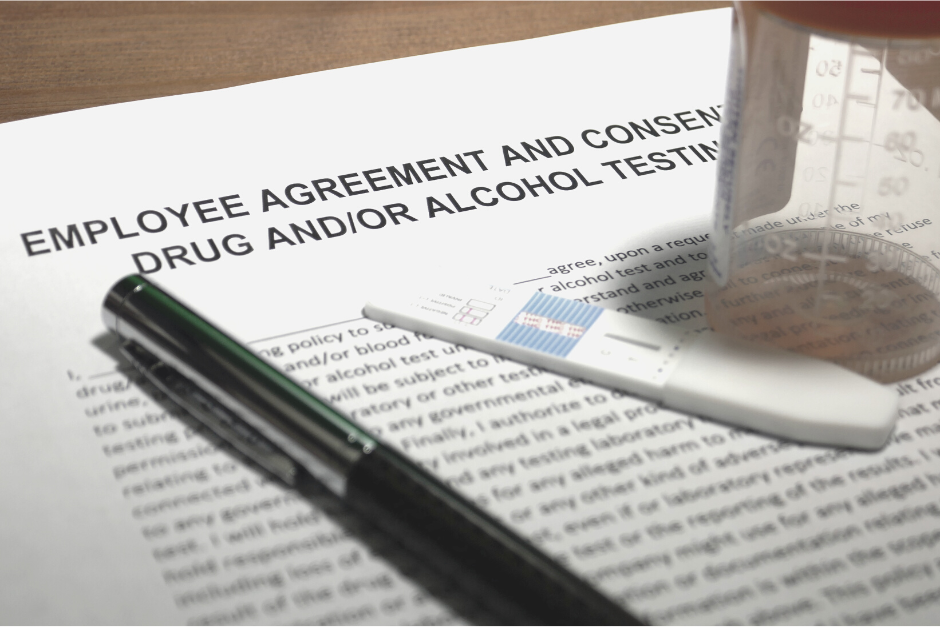By Bill Current, president and founder of the Current Consulting Group and publisher of Current Compliance*

Drug abuse is up. Positive drug test results are up. The number of companies testing for marijuana is down.
We know this from three major annual reports on substance use and drug testing:
- The National Survey on Drug Use and Health (NSDUH) from the Substance Abuse and Mental Health Services Administration (SAMHSA),
- The Drug Testing Index (DTI) from Quest Diagnostics, and
- The Annual Drug Testing Industry Survey from the Current Consulting Group.
The finger of blame can be pointed at one main culprit—the legalization of marijuana. Today, 39 states, including the District of Columbia, have made using marijuana legal for either medicinal or so-called recreational purposes. The trend to legalize marijuana corresponds precisely with the trend lines from these three major reports that indicate that substance abuse is here to stay, that drug testing is more necessary than ever, and that the decision to drop marijuana from a company’s drug-test panel is ill-advised at best and potentially dangerous and costly.
SAMHSA’s Report
According to the NSDUH released on October 26, 2021, substance abuse is on the rise.[i] Key findings include:
- More than 59.3 million people 12 or older used illicit drugs in 2020.
- This represents an increase from 57.2 million in 2019.
- Approximately, 49.6 million admitted to using marijuana in 2020.
- This represents an increase from 48.2 million in 2019.
- Additionally, 37.3 million Americans admitted to using pot in the month prior to being surveyed.
- This represents an increase from 35.8 million the previous year.
In other words, marijuana use is fueling America’s dramatic overall increase in substance abuse. And one specific key indicator within the NSDUH data portends more trouble on the substance abuse horizon. According to one report:
“Between 2015 and 2019, the perceived risk associated with regular [marijuana] use decreased from 52.6% to 42.7%, an 18.8% relative decrease. Decreases in perceived risk were detected in particular among those never married (a 32.6% relative decrease), those who binge drink (a 31.3% relative decrease), [or] use tobacco (a 26.8% relative decrease).”[ii]
This may indicate why the NSDUH reported that in 2020, 2.8 million people tried marijuana for the first time.
Bottom Line: Marijuana use is up, fear of harm from using marijuana is down, and first-time marijuana users are in the millions.
Drug Testing Index
The overall increase in substance abuse is no respecter of boundaries. The Quest Drug Testing Index shows a direct impact on the workplace. “The rate of positive drug test results among America’s workforce reached its highest rate last year since 2001 and was up more than 30% in the combined US workforce from an all-time low in 2010-2012.”[iii]
The DTI also stated: “The overall positivity rate in the combined US workforce, based on nearly 9 million urine drug tests collected between January and December 2021, was up in 2021 to 4.6% compared to 4.4% in 2020 and up 31.4% from the all-time low of 3.5% just 10 years ago (2010-2012).”[iv]
In the DOT-mandated testing area, the DTI reported: “After five years of steady declines in several drug categories, positivity rates based on urine drug tests for the federally mandated, safety-sensitive workforce increased in 2021. Of note, marijuana increased 8.9% (0.79% in 2020 to 0.86% in 2021), amphetamines increased 7.8% (0.64% in 2020 to 0.69% in 2021) and cocaine increased 5.0% (0.20% in 2020 to 0.21% in 2021).”[v]
Regarding marijuana specifically among non-DOT tests, the DTI noted: “Positivity rates for marijuana in the general US workforce based on more than 6 million urine tests continued an upward climb, increasing 8.3% (3.6% in 2020 versus 3.9% in 2021), the highest positivity rate ever reported in the DTI. Over 5 years, positivity for marijuana in the general US workforce increased 50% (2.6% in 2017 versus 3.9% in 2021).”[vi]
Bottom Line: Marijuana may not be the only drug for which workers are testing positive, but it is number one.
Current Consulting Group’s Survey
All of this brings us to the results of the Current Consulting Group’s 24th Annual Drug Testing Industry Survey.[vii] The legalization of marijuana continues to have a negative impact on employers’ drug testing policies. When drug testing providers were asked: “Have you had clients drop marijuana from their drug test panel in the last year?”:
- 63% said yes, but not many
- 15% said yes, too many
- 7% said no, but they expect some to do so
- 13% said no
The top reasons employers drop marijuana from their drug-test panel include:
- 68% believe it makes it harder to hire new people
- 37% say it is to avoid the risk of legal challenges from disgruntled applicants and employees
- 25% believe it is not legal to test for marijuana in their state(s)
- 12% don’t believe testing for marijuana makes the workplace safer
- 9% don’t want to know who marijuana users are
- 8% don’t believe it is right to test for marijuana
- 3% probably use marijuana and don’t want to be hypocrites
With so many employers dropping marijuana from their drug-test panel, it is not surprising that nearly 27% of providers said in five years employers will no longer test for marijuana while 44% said employers will still test for marijuana but it will be a lot fewer. Only 20% predicted that just as many employers as now will still be testing for marijuana.
When asked if employers who drop marijuana from their drug-test panel will eventually reinstate it, 52% said “probably not.” Only 5% said most if not all will add marijuana back into their panel.
Conclusion
What does all of this mean for employers? Here are three key take-aways:
First, with substance abuse trends heading in the wrong direction, it would be a bad time to discontinue drug testing all together. For those employers considering dropping marijuana from their drug-test panel, it would be wise to at least include it when conducting reasonable suspicion and post-accident tests.
Second, Current Consulting Group’s survey also indicated a significant shift toward oral fluid drug testing. When survey participants were asked: “In the future, what drug testing specimen will be used the most?”, 50% said urine, while 44.8% indicated it will be oral fluid. Just a few short years ago urine testing would’ve dominated this question.
The advantages of oral fluid testing, including the ability to detect recent drug use and a window of detection that covers the entire 3- to 10-hour cannabis window of impairment, make it possible for employers to continue testing for marijuana and address workplace safety concerns while simultaneously not prying into the private lives of their employees.
Third, while 56% of participants in Current Consulting’s survey indicated they believe drug testing will increase over the next five years, nearly 40% said they believe drug testing could someday be replaced, at least partially, by some other type of screening method. Of that number, 6.3% expect a “non-drug-related impairment or fitness for duty testing system” to replace drug testing all together.
In the final analysis for employers, it comes down to workplace safety and protecting the bottom line. For those reasons, drug testing and, perhaps, some screening method capable of identifying on-the-job impairment, regardless of the cause of the impairment, are here to stay.
[i] National Survey on Drug Use and Health. SAMHSA. October 2021. file:///C:/Users/bcurr/AppData/Local/Temp/Temp1_2020NSDUHDetTabs01112022%20(1).zip/NSDUHDetTabs1-1to1-5pe2020.pdf
[ii] Decreasing perceived risk associated with regular cannabis use among older adults in the United States from 2015 to 2019. Journal of the American Geriatrics Society. May 2021. https://agsjournals.onlinelibrary.wiley.com/doi/10.1111/jgs.17213
[iii] 2022 Annual Report and Industry Insights. Drug Testing Index™ and Industry Insights. A comprehensive analysis of workforce drug use. Quest Diagnostics. 2022. trendshttps://filecache.mediaroom.com/mr5mr_questdiagnostics/203415/quest_drug_testing_index_2022.pdf
[iv] Ibid.
[v] Ibid.
[vi] Ibid.
[vii] Current Consulting Group’s 24th Annual Drug Testing Industry Survey. May 2022.
*Current Compliance is a comprehensive on-line database of state drug testing laws and other laws that impact drug testing. NDASA members receive special pricing on a one-year or multi-year subscription.

